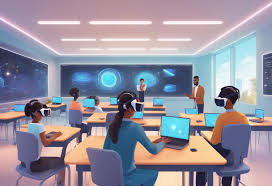In today’s diverse educational landscape, the innovative teacher faces both challenges and opportunities when engaging young learners raised in a media-rich environment. Increasingly, educators are discovering that kids animated shows offer unique potential as teaching tools when thoughtfully incorporated into comprehensive lesson plans. Rather than viewing screen time and education as opposing forces, skilled teachers are finding ways to transform children’s interest in animated content into meaningful learning opportunities across multiple subject areas.
The pedagogical value of quality animation extends far beyond simple entertainment or classroom management. Research in educational psychology suggests that well-designed animated content can support cognitive development through multiple pathways, including visual-spatial processing, narrative comprehension, and emotional engagement. Forward-thinking educators recognize these benefits and strategically select programs that align with specific learning objectives, viewing animation as one valuable component within a balanced instructional approach.
Literacy development represents one of the most significant opportunities for educational integration of animated content. Quality programs often feature rich vocabulary, varied linguistic structures, and narrative complexity that support language acquisition in engaging contexts. Skilled teachers might pause programs to discuss new words, ask prediction questions about plot developments, or explore character motivations—transforming passive viewing into active learning experiences that build crucial comprehension skills.
For mathematics instruction, certain animated shows incorporate numerical concepts, spatial reasoning, and problem-solving scenarios that reinforce classroom learning. Teachers can extend these experiences through related activities, having students graph data about their favorite characters, explore geometric concepts through animation-inspired art projects, or solve math problems contextualizing within familiar animated worlds. These connections help students recognize the relevance of mathematical thinking beyond abstract worksheets.
Science concepts frequently appear in children’s animation, often presented through engaging storylines that make abstract principles more accessible. Episodes exploring natural phenomena, simple machines, animal habitats, or basic physics can serve as excellent introductions or reinforcements to curriculum content. Thoughtful educators use these visual representations as foundations for hands-on experiments, observational activities, and scientific discussions that deepen understanding through multiple modalities.
Social studies content gains emotional resonance when presented through character-driven narratives. Historical events, cultural practices, geographic concepts, and community roles are frequent themes in quality children’s programming. Teachers can leverage these narratives as entry points for more in-depth exploration, helping students connect emotional responses to animated stories with factual information and critical thinking about social concepts.
Perhaps most significantly, many contemporary animated programs explicitly address social-emotional learning through storylines exploring friendship, conflict resolution, emotional regulation, and ethical decision-making. These narratives provide valuable opportunities for classroom discussions, role-playing activities, and reflection exercises that help students develop crucial interpersonal skills in safe, supportive environments. Skilled teachers recognize these moments as opportunities to build classroom community and develop emotional intelligence.
Media literacy represents another valuable skill set that teachers can develop through engagement with animated content. Even young children can learn to analyze how stories are constructed, identify messages within media, distinguish between fantasy and reality, and recognize different perspectives. These critical thinking skills transfer to other contexts, helping students become more discerning consumers of all types of information—an increasingly essential ability in today’s complex media landscape.
For students with diverse learning needs, animated content often provides accessible entry points to curriculum concepts. Visual learners, students with attention differences, children learning English as an additional language, and those with various processing styles frequently engage more successfully with concepts presented through multiple modalities. Thoughtful teachers use these resources to create more inclusive learning environments where all students can access and demonstrate understanding in varied ways.
The most effective educational approaches involve balance, intention, and active engagement. Experienced educators know that animated content works best when it’s part of a comprehensive instructional toolkit, used strategically rather than as a default activity. They select programs thoughtfully, preview content for quality and relevance, limit viewing time appropriately, and develop meaningful extension activities that transform passive watching into active learning experiences. Through this thoughtful approach, the potential educational benefits of quality animated content can be realized without the drawbacks associated with excessive or passive screen time.

